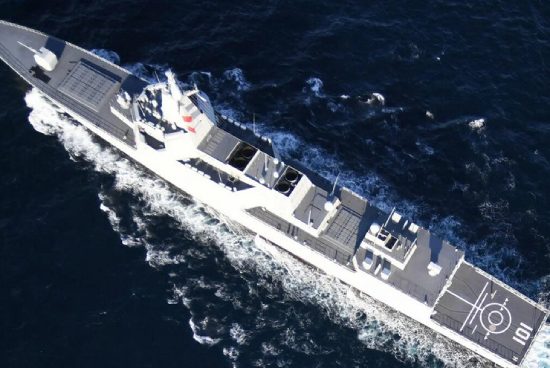The early August visit by US House Speaker Nancy Pelosi took place amid heavy protests from Beijing. The visit was a blatant violation of Washington’s bilateral agreement with Beijing regarding the “One China” policy as well as a violation of international law regarding political independence and territorial integrity.
As was pointed out by many analysts, US provocations over Taiwan mirror a similar pattern by Washington used to cross Moscow’s “red lines” regarding Ukraine, done deliberately to threaten Moscow’s national security concerns. These provocations eventually resulted in now ongoing Russian military operations in neighboring Ukraine. A similar conflict could potentially stem from ongoing US provocations over Taiwan.
China’s Other Military Means
In addition to very public protests by Beijing, Chinese military forces followed Speaker Pelosi’s visit to Taiwan with large-scale exercises, crossing the Taiwan Strait median line and into Taiwan’s self-declared “air defense identification zone” (ADIZ). Initially the US and its allies along with the Western media dismissed these exercises as a “tantrum” thrown by a highly displeased Beijing. However, shortly after, US representatives and the Western media began discussing a “new normal” being incrementally established by Beijing.
Articles like CNN’s, “’New normal’ across the Taiwan Strait as China threat looms ever closer,” would note:
China is attempting to establish a “new normal” across the Taiwan Strait, eroding self-ruled Taiwan’s territorial control and increasing the threat of a strike with each military sortie, officials and analysts say.
Chinese military exercises also included firing missiles over Taiwan. The BBC in its article, “US ‘must contest’ Chinese missiles over Taiwan, says admiral,” would note:
“It’s very important that we contest this type of thing. I know that the gorilla in the room is launching missiles over Taiwan,” Vice Admiral Thomas told reporters in Singapore. “It’s irresponsible to launch missiles over Taiwan into international waters.
“If you don’t challenge it… all of a sudden it can become just like the islands in the South China Sea [that] have now become military outposts. They now are full functioning military outposts that have missiles on them, large runways, hangers, radars, listening posts.”
US Vice Admiral Thomas did not suggest any measures the US could use to “contest” Chinese military activity around and now over Taiwan, and in actuality, there is little the US could do in order to do so.
US Provocations Help Beijing Justify “New Normal”
Lacking any sort of ability to “contest” Chinese military activity around Taiwan, the US appears instead committed to further provocations. Following Speaker Pelosi’s early August visit to the island, a group of US Congressmembers likewise touched down in Taiwan in mid-August, the BBC would report.
Just as Speaker Pelosi’s visit allowed Beijing to justify military exercises around and over Taiwan, this more recent visit by US Congressmembers gave Beijing an opportunity to stretch out and expand its military activity. The Associate Press in its article, “China announces new drills around Taiwan as a US delegation visits the island,” would note:
The exercises are intended as a “resolute response and solemn deterrent against collusion and provocation between the US and Taiwan,” the ministry said.
The United States, having provoked Russia into launching military operations in Ukraine mistakenly believing Moscow would not (and for some reason couldn’t) escalate, is now putting Beijing up to a similar test. Beijing’s strategy of increasing military control of territory around and now in the skies above Taiwan appears to be a strategy that could eventually give Beijing an advantage in this growing crisis without requiring hostilities.
In hindsight it seems reasonable to believe Washington’s best decision to preserve an advantage over Russia regarding Ukraine would have been to encourage Kiev to uphold the Minsk Agreements. Russian forces would have remained within Russian territory, the Donbass region would have remained under Kiev’s control, and the US would be able to move forward with a pro-Western administration in power in Kiev into the foreseeable future.
Instead, Washington is now watching Russia absorb Ukraine, demilitarize not only the Ukrainian armed forces but also the inventories of Ukraine’s Western sponsors. Myths of Western military superiority are blowing away with the smoke on Ukrainian battlefields, revealing destroyed Western military hardware falling far short of their previously vaunted capabilities.
A very similar process is about to take place over Taiwan and the US appears incapable of stopping it let alone reversing yet another self-destructive strategy aimed at provoking near-peer or peer military powers – a strategy that was most likely conceived long ago when the US enjoyed much greater military superiority over its adversaries.
Indeed, far from stopping or reversing, the US transited the Taiwan Strait with two of its warships. Articles like CNN’s, “Why China’s response to US warships in Taiwan Strait surprised analysts,” claims Western analysts believed Beijing would have reacted visibly and directly to the transit and were surprised when they didn’t.
The only actual surprise is that Western analysts have not identified a clearly materializing pattern where Beijing refuses to react directly to provocations like unauthorized travel to Taiwan by US representatives or the violation of Chinese territory by US warships and instead is investing further into military activity around Taiwan to de facto establish control over the island.
As Beijing pursues this strategy, establishing a new normal on its own terms around and over Taiwan, the West is openly preparing more provocations to give Beijing precisely what it needs, continued justification to do so. Canada has now announced it will join the US in provoking China over Taiwan, the Guardian reported in its article, “China warns Canada over planned Taiwan visit by parliamentarians.” It doesn’t require much imagination to foresee Beijing will use this upcoming provocation as yet another justification to expand ongoing military operations.
The US-backed administration in Taipei is also fuelling this crisis. The Guardian in another article titled, “Taiwan fires warning shots at Chinese drone,” would report:
Taiwan fired warning shots at a Chinese drone that buzzed an offshore islet shortly after President Tsai Ing-wen said she had ordered Taiwan’s military to take “strong countermeasures” against what she termed Chinese provocations.
Rather than “counter” Beijing’s military activities, such actions will only justify Beijing’s military activities further as well as possibly give Beijing the ability to take more drastic and also much more permanent measures to cement full control over territory the administration in Taipei attempts to claim as its own.
Taiwan’s Economic Weak Points Offer Beijing Other Means
For an administration that attempts to pose as “independent” of Beijing, Taiwan’s economy is heavily dependent on the rest of China, providing Beijing with the ability to easily enhance its military superiority over and operations against separatist elements in Taipei through economic measures.
According to Harvard University’s Atlas of Economic Complexity, the Chinese mainland represented 22.92% of all the island’s imports followed by Japan at 16.97%. Over 49% of Taiwan’s total exports are shipped to the rest of China with the US following as the second largest export market at 12.65%.
Gradual reunification between Taiwan and the rest of China has already been taking place for many years, primarily through economic integration. Trade, tourism, and investment from the rest of China keeps Taiwan’s economy afloat. When the flow of any of these factors is cut it creates major disruptions.
CNN in their article, “China flexes military muscles, then targets Taiwan’s citrus fruits,” attempts to connect August bans on agricultural goods from Taiwan by the mainland to the ongoing tensions created by visits by US representatives. Regardless of whether there is a connection, the article helps illustrate just how disruptive it is to Taiwan’s economy when Beijing adopts policies impacting Taiwan’s exports. Other articles from across the Western media like the New York Times’, “How China Could Choke Taiwan,” discuss the impact of a Chinese military blockage of Taiwan from all trade. However, similar results could be achieved simply by stopping all trade to and from Taiwan by the rest of China alone.
Such disruptions in trade between Taiwan and the rest of China serve as warnings of just how detached from reality Taiwan “independence” really is from reality and how divergent it is from Taiwan’s actual best interests. They also demonstrate the power the mainland has over Taiwan should the administration in Taipei continue working with foreign interests to divide and destabilize China.
Taiwan’s Vulnerability Reveals the Malice of its “Allies”
It is in the economic realm that Taiwan’s Western backers reveal their lack of true commitment and vision for Taiwanese “independence.” It is a shortsighted and highly self-destructive policy that would lay waste to Taiwan’s economy and population in ways much worse than Ukraine suffered from 2014 onward when the US-installed client regime in Kiev irrationally cut many essential economic ties with Russia at the cost of Ukraine’s economic viability.
Why then would Washington and others across the West encourage Taiwan to pursue separatism and eagerly provoke Beijing, including now through military provocations? Taiwan is being encouraged to fight a war it cannot possibly win against the rest of China it cannot economically survive without. The answer is simply that the US and its allies do not care about Taiwan or its future. It is being cynically used to advance US foreign policy objectives in terms of encircling, containing, dividing, and destroying China. While mainland China will likely prevail, Taiwan which is part of China will suffer tremendously in the event of even a short-term conflict.
Beijing, understanding this fully, is attempting to extend control over Taiwan militarily without waging war, incrementally expanding military activities around Taiwan with each provocation provided to it from the US and its allies. Beijing is also fully prepared for a military confrontation either with armed forces in Taiwan or against an attempted intervention by foreign powers like the United States.
The fact that Taiwan is so vulnerable militarily and economically yet is still encouraged to adopt provocative policies toward Beijing demonstrates just how little Washington cares about Taiwan and its future. The idea of Washington intervening to “defend” Taiwan is highly unrealistic. “Defending” Taiwan would only be used as a pretext for the US to wage war against China or, what is much more likely, attempt to disrupt Chinese commercial shipping worldwide.
Washington, according to the US State Department’s official website, acknowledges Beijing’s stance that there is only one China and that Taiwan is a part of China. Washington’s goal is to divide and destroy all of China – including Taiwan.
Author
Brian Berletic is a Bangkok-based geopolitical researcher and writer, especially for the online magazine “New Eastern Outlook”.
![]() Please help keep us afloat. Donate here
Please help keep us afloat. Donate here





